JANUARY 2020 ENEWS
Dear friends of Fort Ross and Salt Point,
Welcome, 2020! I hope you are warming up to the new year and new decade. FRC staff are busily organizing our calendar, our dedicated volunteers are checking in and signing up for what lies ahead, and we’ve got a great line-up of events on the docket to encourage your next visit. Read on for the details.
I wanted to update you on the progress of the Fort Ross Cultural Trail. Fort Ross is known foremost for its 19th century Russian settlement, but these lands hold many more stories from before, during, and after the Russian era. The Fort Ross Cultural Trail will help our visitors see outside the fort compound to learn about the Kashia, Alaska Native, and Ranch era peoples who lived on these lands. California State Parks funded this project in 2018 and this year they will focus on planning, permitting, and storyboarding the interpretation of this ambitious project. Trail construction will start in 2021 and we anticipate the trail and associated interpretation will be ready to go in 2022. We are so excited to get a new trail and high tech interpretation at Fort Ross! See the new State Parks website for more information.
Please know we are grateful to you for your enthusiasm and support, and we look forward to seeing you at Fort Ross and Salt Point in the year ahead.
Onward!
Sarah Sweedler
Fort Ross Conservancy CEO
Mark Your Calendar: 2020 Events at Fort Ross
Details for all our 2020 events are at our Events webpage: https://www.fortross.org/events

Saturday, January 25: WINTER CELEBRATION
12-1:30pm Traditional Russian Kolyadki singing, skit & games
Join “Russian House Kedry" at Fort Ross to learn about the traditional Russian Winter holiday "Kolyadki" and the upcoming transition to Spring.Enjoy kid friendly traditional folk games, crafts, song and baking, all to help celebrate Tatyana’s Day, the traditional day for honoring all students.
2-4pm Fort Ross Compound Walking Tour and Tea with Samovar
Hear the behind-the-scenes stories of Fort Ross/Metini by joining us on a guided tour through the fort compound. We'll venture behind locked doors and outside the compound walls to learn about the surrounding neighborhoods of the Kashia Pomo, Alaska Native, Russian, and Ranch eras. Following our hour-long tour, let’s sit down at the samovar for a cup of hot tea and treats. Meet at 2:30pm at the Visitor Center. $20/person plus California State Park parking fees apply. Tour led by Fort Ross Conservancy’s bilingual (English and Russian) guide Hank Birnbaum. Reserve your spot for Tour & Tea here.
February 21, 22 & 23: RUSSIAN FESTIVAL at the Russian Center, San Francisco
Enjoy the traditions of Old Russia at Russian Center in San Francisco! Food, Music, Dancing, Vodka Tasting, Russian Treats & Sweets, Kids’ Crafts, Face Painting & Games, Art Gallery, Museum of Russian Culture. Please see the Russian Center website for more information.
Saturday, April 25: EARTH DAY & SPRING CELEBRATION
Celebrate and honor Spring and Earth Day with traditional folk songs, ecology action and tour & tea. Russian House Kedry, Kitka Womens Ensemble and guest speakers.
ALASKA NATIVE DAY at Fort Ross will resume on May 15, 2021 and will continue every other year.
Sunday, June 7: SNAPSHOT CAL COAST– Fort Ross State Historic Park BioBlitz
#SnapshotCalCoast
Get your cameras and smartphones ready! Join Fort Ross Conservancy as we come together for the statewide movement led by The California Academy of Sciences to get out to the coast, search for as many creatures as we can find, and share the photos of our discoveries on the website and app, iNaturalist. Register Here.
Saturday, July 25: FORT ROSS FESTIVAL
Looking for the perfect way to celebrate Summer in Sonoma County? Join us on July 25th for Fort Ross Festival! Where else can you witness Kashia Pomo ceremonial dancing, listen to folk, gypsy and bluegrass music, learn from Alaska Native craftspeople, and take in traditional Russian performances, all together on the most beautiful stretch of the Sonoma coast? Grab a pint from our Beer Garden and enjoy an amazing day celebrating different cultures. In addition, with fantastic support from California State Parks, we will have cannon firings and militia demonstration! We will be holding our third Borsch Cook-Off! If you have a recipe you’d like to share, bring a pot of borscht and see how your borscht compares to others in the competition and win some prizes!
Saturday, August 1: METINI DAY
SuNuNu Shinal Pomo Dance Group is hosting the third annual Metini Day at Fort Ross.This event is open to all, so come on out and help celebrate this special place.
Saturday, October 10: HARVEST FESTIVAL
Harvest is the time to enjoy autumn’s fresh air with friends and family, acknowledging all that the seasons provide us. Please join us! Harvest Festival is a free event. Please park at the main parking lot and take the shuttle to the orchard. Regular State Parks kiosk fees of $8/car apply.
There will not be food vendors at the park–please bring a picnic.
Saturday, December 12: COMMUNITY POTLUCK
Fort Ross First Saturdays
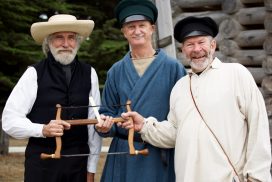
Wondering when to visit Fort Ross? We suggest Fort Ross First Saturdays! While every day at Fort Ross is special, on the first Saturday of each month we offer extra interpretation and more reasons to come visit: a Russian windmill demonstration, Call House Museum tours, and the Fort Ross Talk and Tea!
Windmill Turning – Our experienced windmill docents will turn the mill into the wind, explain its unique construction, and share with you how the two mills were used during the Russian era. Windmill talk and demonstration takes place only on the first Saturday of each month at 12 Noon.
Free with park entrance; donations appreciated!
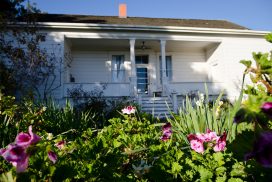
Call House tours – Take a guided tour through the Call House Museum and learn about early-California life during the American Ranch period. You’ll see how hand-crank telephones work and how the square grand piano found its way from Boston to rural Sonoma coast. The Call House is open both Saturday and Sunday on the first weekend of the month from 1pm to 4pm.
Free with park entrance; donations appreciated!
.jpg)
Fort Ross Compound Walking Tour and Tea with Samovar
2:30pm to 4pm
Hear the behind-the-scenes stories of Fort Ross/Metini by joining us on a guided tour through the fort compound. We'll venture behind locked doors and outside the compound walls to learn about the surrounding neighborhoods of the Kashia Pomo, Alaska Native, Russian, and Ranch eras. Following our hour-long tour, let’s sit down at the samovar for a cup of hot tea and treats. Meet at 2:30pm at the Visitor Center. $20/person plus California State Park parking fees apply. Tour led by Fort Ross Conservancy’s bilingual (English and Russian) guide Hank Birnbaum. Limited seating, reservations highly suggested: Reserve your spot for Tour & Tea here.
Friday, February, 7pm, at Fort Ross School: Glenn Farris in Town
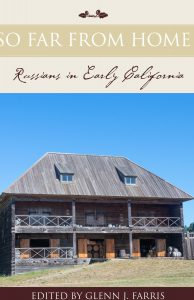
Dr. Glenn Farris, author of “So Far From Home: Russians in Early California,” (recently re-issued by Fort Ross Conservancy), will speak at Fort Ross School on Friday, February 7th, at 7pm.
Although we may think of Fort Ross as the prime point of contact of the Russian American Company in early California, the story is much wider than that. The Russians interacted with Spanish explorers as they finally moved to explore and settle California, and they maintained a wide-ranging commercial trade with the Californios. Russian naval ships became frequent visitors to California and the officer’s logs are invaluable sources of information. A retired California Senior State Archaeologist, Dr. Farris has a wide ranging background in the Russian history of California, including having worked on many excavation sites at Fort Ross and throughout the state. Please join us for a fascinating evening of history!
Teaming Up to Save an Endangered Species
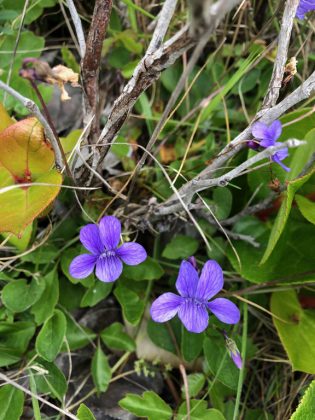
This year marks Fort Ross Conservancy’s third year participating in the Coastal Prairie Restoration for Behren’s Silverspot Butterfly project. The initial goal of our survey efforts is to collect baseline population density data of Viola adunca, a lovely low slung plant commonly known as the Western Dog Violet that grows throughout the coastal terraces of Salt Point State Park and Fort Ross Historic State Park. The viola is the host plant to the Behren’s Silverspot butterfly, added to the endangered species list since 1997. If we have a healthy viola plant population, we are increasing the chances for a better population of the Behren’s butterfly.
For the first two years we conducted surveys of the Viola adunca. As of last season, we started
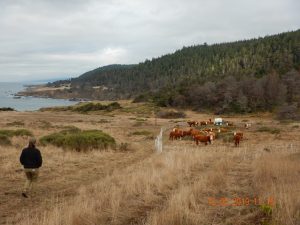
conducting additional surveys for the butterflies themselves! Butterflies are an important part of the ecosystem as they play roles as both predator and prey in our food chain. They are a huge contributor to the pollination of flowers and are a good indicator of the health of our climate.
We are working on this project with our dedicated partners, California State Parks Natural Resources Management and the California Department of Fish and Wildlife, who are working to create new sustainable land management plans for the Sonoma Coast.
FRC’s Volunteer Coordinator Melissa Bushner oversees the field work and she’s written two wonderful articles which give a brief history and overview of the project. To brush up on the topic, please check out: Viola adunca, Fall 2017 and Viola adunca, December 2018.
We are in the process of creating a webpage documenting the project to help our members better understand the complexities of the coastal prairie and the importance of this endangered species.
We look forward to kicking off our 2020 surveys of the Viola adunca in mid March, and surveys of the Behren’s Silverspot Butterfly in late June. Please consider signing up as a community scientist to conduct one, two, or all the surveys! Each survey offers time outdoors along the stunning Sonoma coast -- what better way to volunteer your time?
If you’re interested in participating in this important project, please email Melissa Bushner at melissab@fortross.org.
--Song Hunter, Director of Programs
Sea Lion Survey Project Annual Report
Fort Ross State Historic Park offers a wealth of cultural history and natural wonder for visitors of all ages and from all over the world. As a small non-profit dedicated to sharing all that this park has to offer, Fort Ross Conservancy has to continually evaluate priorities and decide where to focus our efforts. There are a number of reasons why we’ve chosen to keep the Sea Lion Survey Project alive. Perhaps the most important reason is to do our small part to contribute to larger understandings of ocean health. Sea lion research allows environmental agencies and organizations such as NOAA and the Marine Mammal Center to uncover valuable information on our planet’s complex ocean systems and how we can work to improve them. Not to mention, learning how these animals respond to changing environmental conditions gives us information about how we might respond to them, as well.
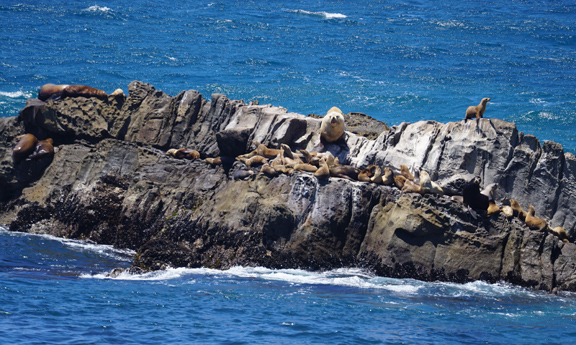
Fort Ross’ coastal waters are home to California (Zalophus californianus) and Steller sea lions (Eumetopias jubatus). Data we collect during our surveys includes: species-specific population counts, sea lion behaviors, and any human-caused disturbances to the animals. Here’s a summarized look of our 2019 survey data: (Click to enlarge)
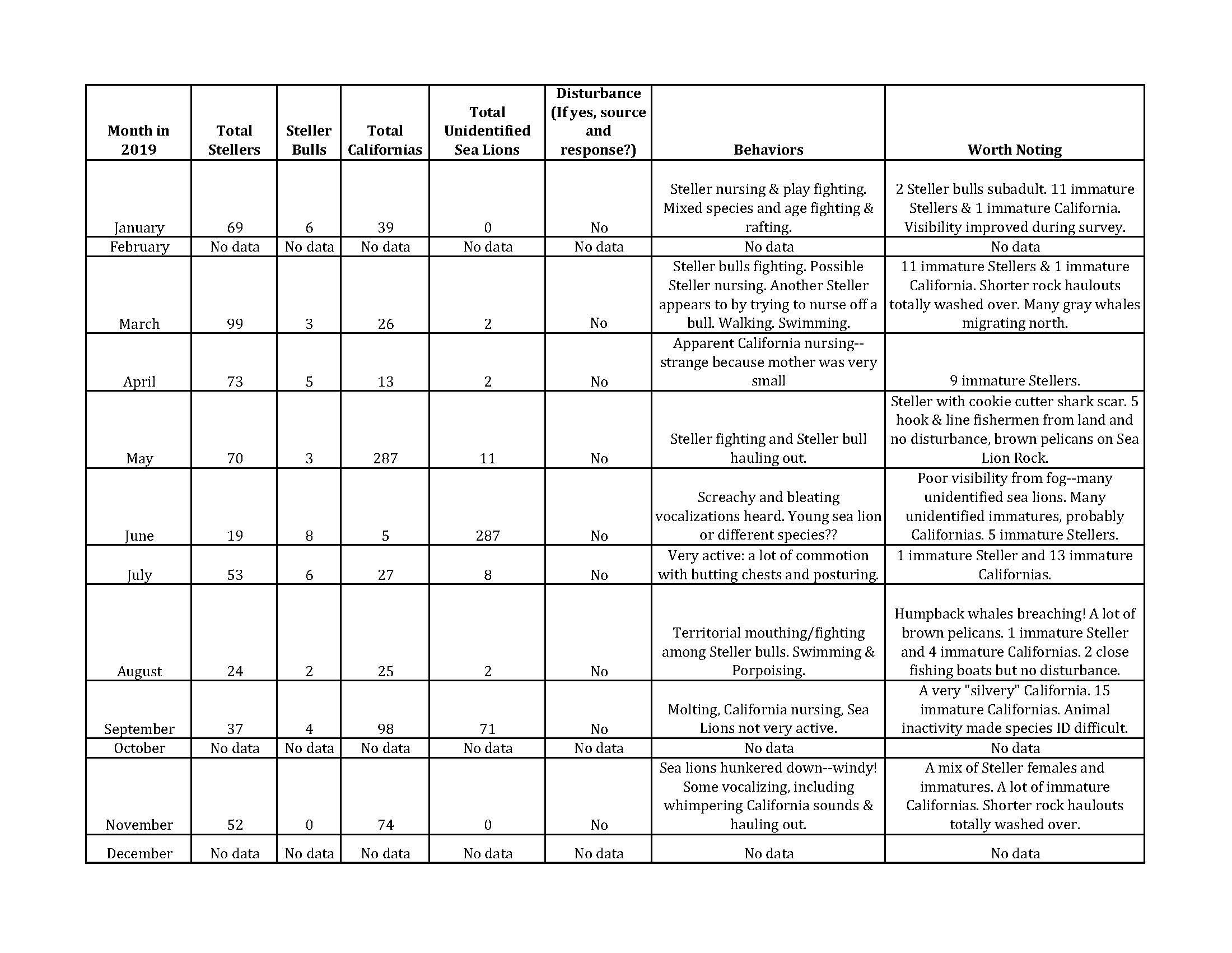
A highlight from last year’s monitoring is recent evidence of California sea lions nursing at Fort Ross. It has been widely understood that the females of this species don’t travel this far north along the California coast. It would be very interesting to find out if the females we’re seeing here are normal, though rare, exceptions, or part of a larger trend in changing migration patterns--and if so, what is prompting the change? This is one of many questions we hope to get answers to. Hopefully by sharing our data with scientists, the answers will begin to follow. For more background information on why we monitor our sea lions, some of the challenges we face during data collection, and annual population trends, please read our first annual report, published January 2019.
In the last few years we’ve realized the importance of raising awareness about our resident California and Steller sea lions and sharing the data we’ve been collecting. We’ve made some significant strides toward that end: over a thousand people have read our eNews articles covering our monitoring efforts; we’ve started regularly using social media to share photos, interesting observations and population counts from each survey; we’ve submitted our resights of branded and tagged animals to NOAA Fisheries' Marine Mammal Laboratory, and lastly, we’ve established contacts at organizations that conduct sea lion research who would like to receive our data. More will be revealed as these data partnerships develop!
In 2015, Fort Ross and Salt Point State Parks became part of the Greater Farallones National Marine Sanctuary. In addition to our monthly sea lion surveys, we conduct several bi-monthly Beach Watch surveys along our Parks’ stretch of coastline. During these surveys we have another chance to check in on our local lions. Between all this monitoring, we’ve been able to spot a few branded and/or tagged California sea lions, and send photographs to our contact at the Marine Mammal Laboratory. All the tags we’ve seen so far have been yellow, indicating that the animals were tagged at San Miguel Island in the Channel Islands--348 miles away according to Google Maps. This information is not only fun to receive and share with our members and Park visitors, it’s also encouraging to know that we are contributing data to NOAA Fisheries’ resight database. Our effort to share our data is starting to pay off.
The Fort Ross sea lion surveys began in the ‘90s with marine biologist and longtime sea lion lover Dr. Joe Mortenson, who established a somewhat flexible survey protocol. He wanted to allow our surveying methods to evolve as volunteers evolved and their experience grew. Because of this approach, we’ve had flexibility to keep improving our data collection methods and data collection. While our project has matured, it has left a bit of a data management challenge in its wake. Yet we are determined to not let all this collected data go unshared; we are working with a group of six student interns in San Francisco who are now carefully and systematically scrubbing the data so it’s most useful to researchers. We’ve also taken a good look at our years of collection methods and completed an overhaul of our data forms. These latest revisions build on all the others that came before, and we’re excited to use them in 2020 for a strong start in the new year.
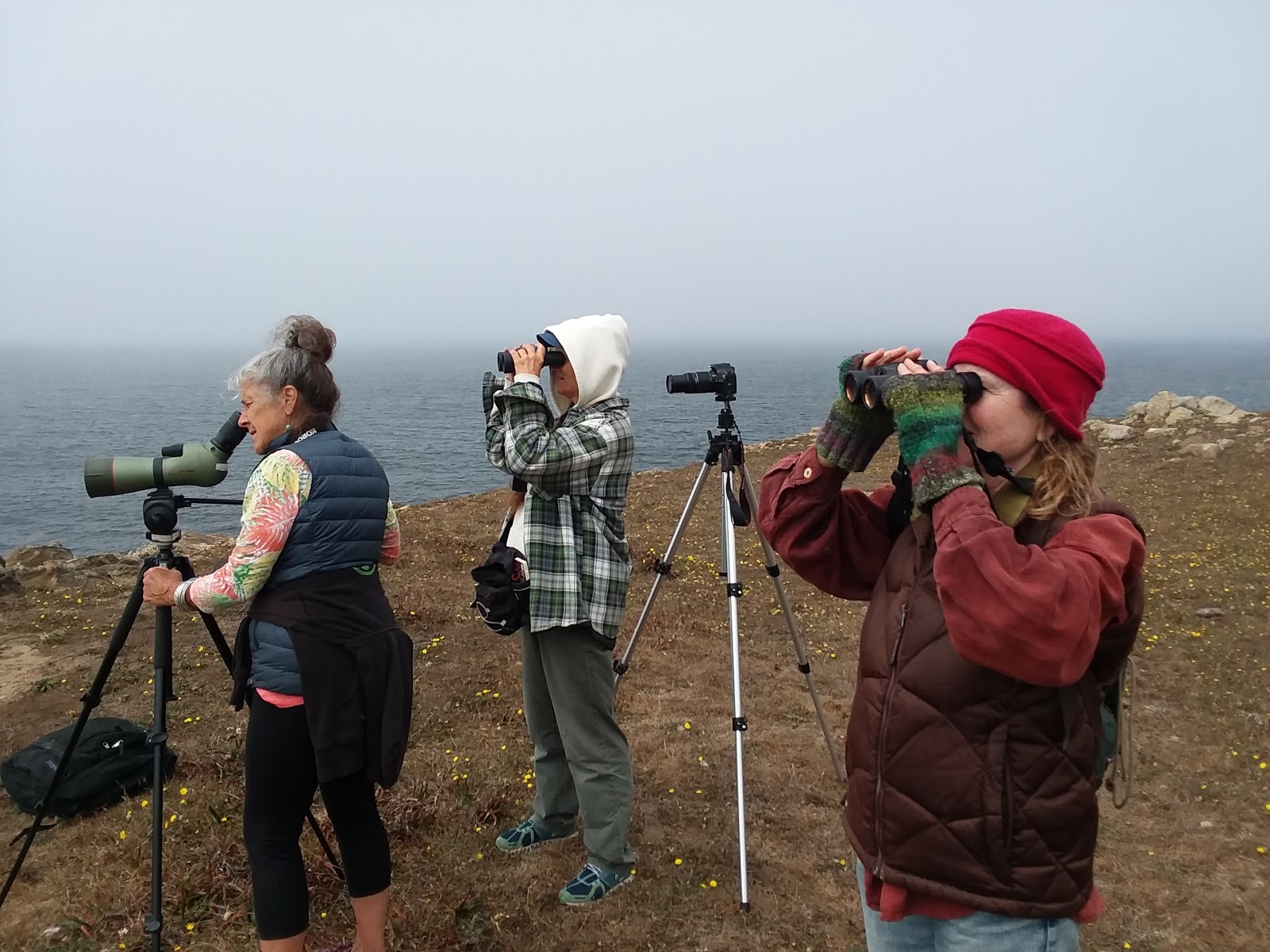
The strength and success of the Sea Lion Survey Project rests heavily on the experience and energy of its volunteers. A sea lion-sized thank you to all our terrific volunteers, and a very special thanks to Dr. Joe Mortenson who retired in 2019. The more volunteers we have the stronger this project becomes. We’re thrilled that our crew is growing, with new volunteers in 2019 and even more who will be joining us on our upcoming January survey. If you’d like to consider volunteering, please send me an email at charonv@fortross.org for more details. If you are interested in supporting any of Fort Ross Conservancy’s stellar projects and initiatives please consider becoming a member.
Marine Mammal Monitoring at Fort Ross and Salt Point
NOAA Fisheries - Steller Sea Lion Profile
NOAA Fisheries - Steller Sea Lion Database
NOAA Fisheries - California Sea Lion Profile
NOAA Fisheries - California Sea Lion Research
NOAA Fisheries - Pinniped Branding on the West Coast
--Charon Vilnai, Programs Instructor, Sea Lion Survey Project Lead & Call House Museum Lead
Opening For Salt Point Park Camp Host
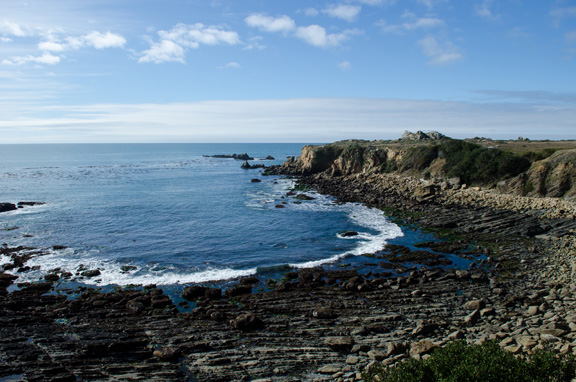
We are seeking a camp host at Salt Point. The camp host will provide information to visiting public, report medical emergencies, and other park related problems to the staff, and supplement the maintenance staff by performing minor housekeeping in the campground restrooms. The camp host must be willing to work with people and possess good communication skills as well as possess the ability to collect fees, make change, and perform simple accounting procedures. The camp host reports to the designated Campground Ranger. The camp host must be willing to work weekends and holidays. The schedule for this position is 4 days on and 3 days off with one weekend day off. Applicants must be willing to commit to at least a 3 month commitment that can be extended for another 3 months. Camp hosts will be trained by DPR staff in proper campground operations.
Gerstle Cove Campground is located about 1 hour north of Bodega Bay and offers 29 campsites and a group campsite.
Woodside campground is located about 1 hour north of Bodega Bay and offers (up to) 78 campsites.
Reef campground is located about 45 minutes north of Bodega Bay and offers 21 campsites.
For more information on camp host duties please visit state parks website at https://www.parks.ca.gov/?page_id=911. For Salt Point State Parks website please click here: https://www.parks.ca.gov/?page_id=453
For any questions regarding this position, please email Ranger Trevor Nealy; trevor.nealy@parks.ca.gov or call at (707)875-3483.
Book Review by Rich Panter, FRC Board Director

A Voyage to California, the Sandwich Islands, & Around the World in the Years 1826-1829, by August Duhaut-Cilly, UC Press Berkeley, 1999 available at our Bookshop.
Penned by an unusually observant and articulate French trading ship’s captain and former Napoleonic war naval veteran of a prominent Breton family, this compilation of several of August Duhaut-Cilly’s journals and logs is filled with vivid details of his experiences along the coasts of California and Hawaii’s Island of Oahu. His accounts are simply a must-read for anyone seeking a richly-detailed and intimate glimpse of life in colonial California 190 years ago.
Duhaut-Cilly left France in April, 1826 with a shipload of merchandise that his backers expected him to trade for the valuable fur-seal skins on the Pacific coast of North America. Following a well-established route, he was to carry these furs to China, where they would sell at a substantial profit, and then return to France. Unfortunately, the French trade goods he offered were of little interest to the Indians or the Spaniards of California. He reached San Francisco at the start of 1827 and spent almost two years trying to unload his merchandise. By the end of 1828 he had tried ports from San Francisco to Peru, including Fort Ross, with two side trips to Hawaii. Duhaut-Cilly finally reached China in December 1828, disposed of such cargo as he’d been able to assemble, rounded the Horn of Africa, and arrived back in France on July 19, 1829.
While in California, however, Duhaut-Cilly wrote over five hundred pages of his observations of the Spanish and Indian life he encountered among the remote outpost villages and towns - San Pedro and Los Angeles, Santa Barbara, Monterey, and the Presidio of San Francisco. With the Franciscan mission system at its height, fellow Catholic Duhaut-Cilly, was allowed to see places and discuss topics that would have been off-limits to an Englishman like Vancouver, or a Russian like Rezanov. Like most early European visitors to the Californian coast, he was struck by both its beauty and potential. His lucid, detailed descriptions, along with several illustrations he also sketched, including a view of Ft. Ross he drew one morning during the few days he stayed at the Fort, from the hill of its cemetery, are illustrated in this book. He also gives colorful accounts of several Franciscan missionaries, his conversations with them, (often as a dinner guest), their Missions, their treatment of the Indians impressed into their service, the herding and hunting expertise of the local vaqueros, and the incredible abundance of wildlife.
The book is also filled with detailed descriptions of the physical features of coastlines and their environs, in both California and Hawaii. For example, he allows us to see the Honolulu
he visited - a village of about six thousand Hawaiians and a favorite port-of-call for both American whalers and British naval vessels, and the site of many drunken brawls between them. While there, Duhaut-Cilly also joins a local chief on a short cruise down the coast to the Pearl River - not yet a harbor - as the river’s mouth was then blocked by a large, shallow reef, while on its banks were large salt pans the Hawaiian had created in its pristine waters. Entering Honolulu’s twisting harbor was nearly as difficult, with just a two mile break in its off-shore reef.
In order to visit Fort Ross for three days in the June of 1828, Duhaut-Cilly had to moor his trading ship, Heros, fifteen miles south of Fort Ross, in Bodega Bay, which he described as a “a roadstead”, (a sheltered stretch of water near the shore in which ships can ride at anchor). Fort Ross Commandant, Paul Shelekhov, had ordered horses there for him and his small shore party. Together, along with several Russians, they rode up the coast to the Fort. He describes part of the journey: “crossing a considerable river, called Sacabaya by the Indians and Slavianka by the Russians…we passed over safely enough in a baidarka that Mr. Shelekhov has sent for the purpose. Since this boat, made of sealskin held only two persons, it was necessary to make a trip for each one of us. Conducted skillfully by a Kodiak Islander, it had more than one point of semblance to the bark of old Charon”.
As he did throughout his travels, Duhaut-Cilly shared insights like this on Fort Ross: Although this colony, in existence for fifteen years, appears to lack nothing, it cannot be of great account to the company that founded it. As the principal source of revenue they counted on the hunt for sea otters and seals. The first of these is nearly exhausted and no longer provides anything; as for the second…that hunt, once quite productive, declines with every passing day and in a few more years will amount to nothing. A few sentences later, however, he credits the colony’s success in animal husbandry, noting that: with only six hundred cows, (it) was producing more butter and cheese than all of Alta California with its countless herds.
Duhaut-Cilly offers several more thoughts on the inhabitants of Fort Ross, and many more on the dozens of people and places he encountered on his three-year voyage circumnavigating the globe, consistently bringing to life this fascinating era of history.
- Rich Panter, FRC Board Trustee
.jpg)